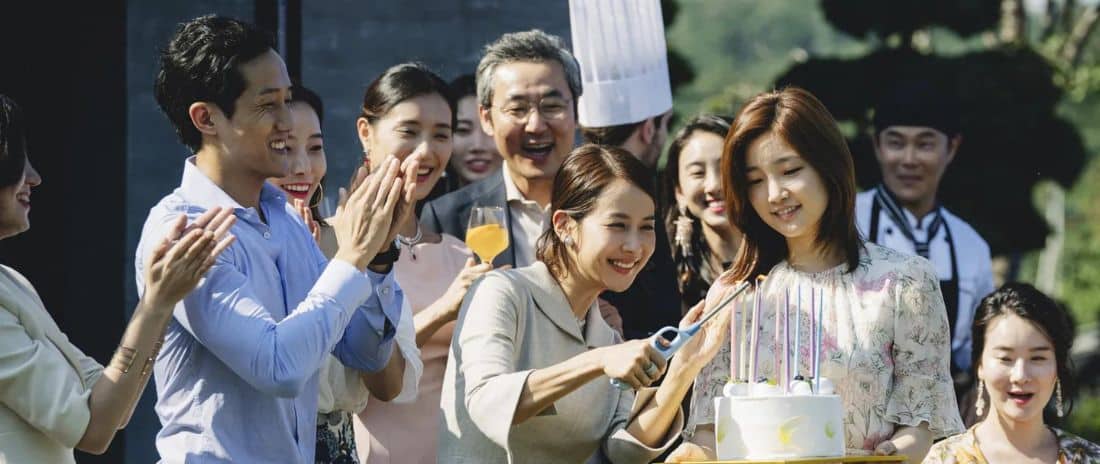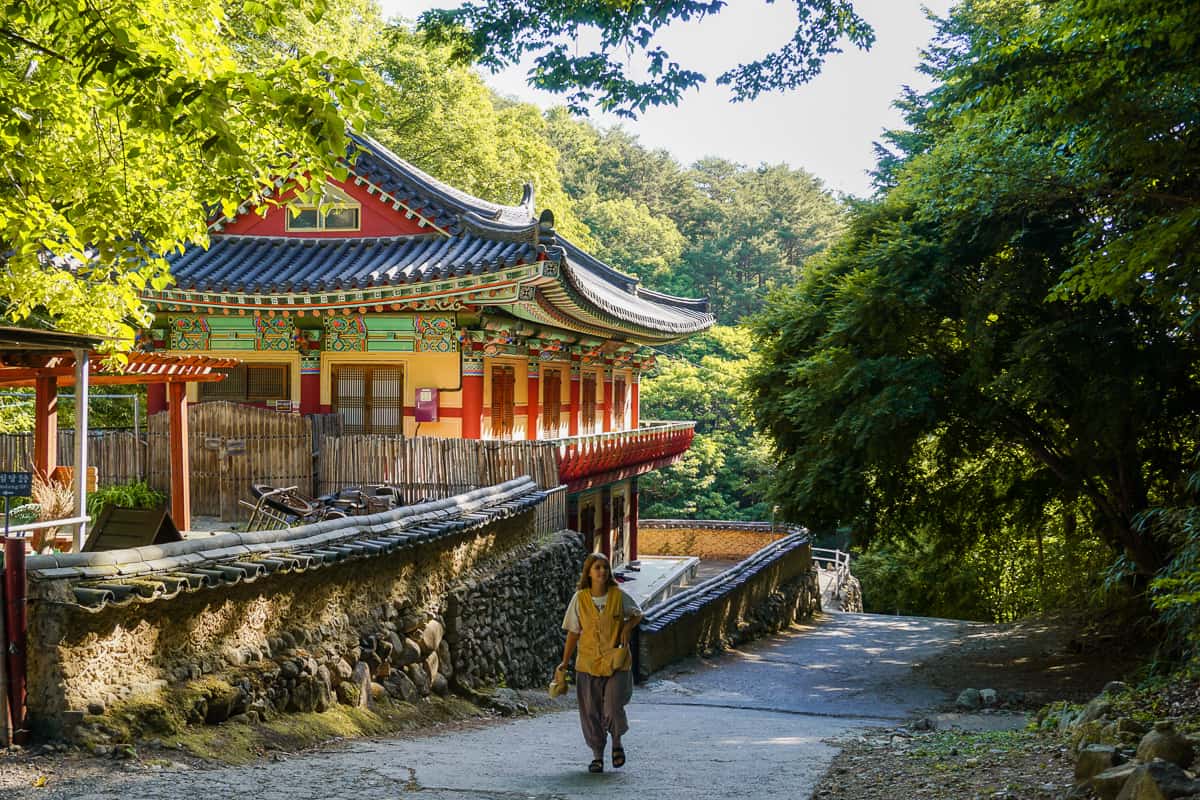A Guide to Experiencing South Korea: Tips for American Travellers

Introduction
Brief Overview of South Korea
Welcome to the vibrant and fascinating nation of South Korea! Nestled in East Asia, this country boasts a rich tapestry of history, modernity, and culture. From the bustling streets of Seoul, where the skyline is punctuated by futuristic skyscrapers, to the serene beauty of Jeju Island, South Korea offers something for every traveler.
With a population of approximately 52 million people, the country's blend of ancient traditions and cutting-edge technology creates a unique atmosphere that captivates every visitor. Some key highlights about South Korea include:
- Historical Depth: With thousands of years of history, ancient palaces and Confucian temples can still be found among the modern cityscape.
- Culinary Delights: The food scene is incredible, ranging from street food vendors to high-end dining experiences.
- K-Pop and Culture: The global phenomenon of K-Pop has brought South Korean culture to the forefront, making it a vibrant hub for entertainment.
Purpose of the Guide
This guide aims to provide you with essential tips and knowledge to make the most of your visit to South Korea. Whether you're exploring Seoul's cultural landmarks or indulging in a traditional Korean BBQ, our guide will:
- Help you navigate visa requirements and travel planning
- Offer insights into cultural etiquette and customs
- Provide practical information on transportation, accommodation, and health
- Highlight must-visit destinations and delicious local cuisine
By equipping you with this information, we hope to make your journey through South Korea seamless, enjoyable, and unforgettable!
Visa Requirements and Travel Planning
Visa Application Process
To kick off your adventure in South Korea, understanding the visa application process is essential. Depending on your nationality, some travelers may enjoy visa-free access for short visits, which generally lasts up to 90 days. However, if you plan to stay longer or engage in work or study, you'll need to apply for the appropriate visa. Here’s a quick step-by-step on applying for a visa:
- Determine Visa Type: Visit the official South Korean immigration website to find the visa category that suits your purpose (e.g., tourist, student, work).
- Gather Required Documents:
- A completed visa application form
- Passport with at least six months validity
- A recent passport-size photograph
- Proof of accommodation and travel itinerary
- Additional documentation based on your visa type
- Submit Your Application: Depending on your country, you may apply at a Korean embassy or consulate, or through specific online portals.
Best Time to Visit
When planning your trip, timing can enhance your experience significantly. The best times to visit South Korea are during the spring (April to June) and autumn (September to November). Here’s why:
- Spring: Cherry blossoms bloom, painting the streets in pink and white, creating a picturesque backdrop for your travels.
- Autumn: The foliage turns vibrant shades of red and orange, offering stunning views, especially in national parks.
Other tips:
- Summer (July to August) can be hot and humid, while winter (December to February) is cold, but perfect for skiing enthusiasts.
By timing your visit right, you can enjoy the unique seasonal festivals and activities, making your trip to South Korea even more memorable!

Cultural Etiquette and Customs
Bowing and Greetings
As you embark on your journey through South Korea, you'll quickly notice the importance of respect and politeness in their culture. One of the most common forms of greeting is bowing. This isn’t just a simple nod; the depth of your bow reflects your respect for the person you are greeting. For instance, a slight bow is appropriate for casual encounters, while a deeper bow signifies higher respect, especially when meeting elders or superiors.
Additionally, when shaking hands, it’s customary to use both hands. This gesture shows sincerity and respect. Don’t be surprised if people also greet you with a warm smile, often accompanied by phrases like “Annyeonghaseyo” (hello) or “Gamsahamnida” (thank you).
Dining Etiquette
Dining in South Korea is an experience rich in customs that you definitely want to appreciate. Here are some dining etiquette tips to keep in mind:
- Wait for the Elders: Always wait for the oldest person at the table to start eating first; this reflects respect for their position.
- Use Both Hands: When receiving or passing food, it’s polite to use both hands. This is especially important when handing over items like drinks or chopsticks.
- Chopstick Rules: Avoid sticking your chopsticks upright in your rice; this resembles a funeral custom and is considered rude.
Sharing and enjoying food is a significant part of South Korean culture, so feel encouraged to try everything on the table. Meals often come with a variety of side dishes called "banchan" which perfectly complement your main dish. Bon appétit!

Transportation in South Korea
Public Transportation Options
Navigating through South Korea is a breeze, thanks to its excellent public transportation system. From efficient subways to China-perfect surface buses, you'll find various options to explore the cities. Here’s a quick overview of what’s available:
- Subway: The subway systems in cities like Seoul and Busan are extensive and user-friendly. They are clean, safe, and offer English signage. With multiple lines connecting key areas, you can get almost anywhere quickly.
- Buses: The bus network is equally commendable. Buses come in various types, like blue (long-distance), green (local), and red (express). Just be sure to check the route and schedules, which can generally be found on apps and websites.
- Taxis: Taxis are another option, and they are reasonably priced. Make sure to have your destination written in Korean, as not all drivers speak English.
Using T-money Card
To make your travel even simpler, consider getting a T-money card. This versatile transportation card can be used for both buses and subways, as well as for taxis and convenience stores. Here’s how it works:
- Purchase: You can buy a T-money card at any convenience store or subway station.
- Recharge: Simply top it up as needed; it’s incredibly convenient to add funds when you get low.
- Usage: Just tap the card on the reader when you enter and exit the subway or bus. The fare is automatically deducted, taking the hassle out of cash handling.
With a T-money card in hand, you’re all set to embrace the vibrant urban landscape of South Korea, making your travels seamless and enjoyable!

Accommodation Options
Hotels vs Guesthouses
When it comes to accommodation in South Korea, you're spoilt for choice! The first decision you'll need to make is whether to stay in a hotel or a guesthouse. Each option offers its own unique experience.
- Hotels: If you prefer a touch of luxury or a hassle-free environment, hotels are the way to go. Major chains like Sheraton, Hilton, and Four Seasons can be found in urban hotspots, offering amenities such as:
- Spacious rooms with modern decor
- Room service and fine dining restaurants
- Fitness centers and spas
- Guesthouses: On the other hand, if you're looking for something cozier and more budget-friendly, guesthouses are an excellent option. They typically provide:
- A homier atmosphere
- Opportunities to meet and interact with fellow travelers
- Shared kitchens and living spaces for socializing
Homestay Experiences
For a truly immersive cultural experience, consider a homestay. This option allows you to live with a local family, giving you insight into their daily lives and customs. Benefits of a homestay include:
- Local Cuisine: You'll have the opportunity to learn how to cook traditional dishes and enjoy meals prepared by your hosts.
- Cultural Exchange: Engage in conversations and activities with your hosts, which can enhance your understanding of South Korean culture.
- Unique Experience: Every homestay is different. Whether it’s participating in local festivals or practicing your Korean, you're guaranteed a memorable adventure.
With such varied accommodation options, you can choose what suits your travel style best, whether it’s the comfort of a hotel, the charm of a guesthouse, or the immersive experience of a homestay!

Must-Visit Destinations
Seoul
No trip to South Korea is complete without exploring the vibrant capital, Seoul. With its perfect blend of tradition and modernity, Seoul offers countless attractions that will captivate your senses. Here are some must-visit spots:
- Gyeongbokgung Palace: As the largest of the Five Grand Palaces, Gyeongbokgung is a stunning representation of traditional Korean architecture. Don’t miss the daily changing of the guard ceremony, which is a spectacle of colors and history.
- Myeongdong: This bustling shopping district is a haven for skincare enthusiasts and street food lovers alike. Spend an afternoon sampling famous snacks like tteokbokki (spicy rice cakes) and hotteok (sweet pancakes).
- N Seoul Tower: For a breathtaking panoramic view of the city, take the cable car up to Namsan Park and visit the iconic N Seoul Tower, especially magical when lit up at night.
Busan
Next on your must-visit list is Busan, South Korea’s second-largest city, renowned for its splendid beaches and rich seafood culture. Here are some highlights:
- Haeundae Beach: Known for its beautiful sandy stretch, Haeundae Beach is perfect for sunbathing, swimming, or simply enjoying the stunning sunset. The beachside promenade is lined with cafes and restaurants.
- Gamcheon Culture Village: This picturesque village is famous for its vividly painted houses and artistic murals. Wander through its alleyways to discover unique shops and art installations.
- Jagalchi Fish Market: Dive into Busan's seafood scene at this bustling market, where you can sample fresh catches like live octopus or enjoy a savory bowl of seafood stew.
Whether you're basking in the vibrant energy of Seoul or soaking up the coastal charm of Busan, these destinations promise unforgettable experiences that showcase the heart and soul of South Korea!

Traditional Korean Cuisine
Popular Dishes to Try
As you explore South Korea, you’ll discover that one of the delights of traveling is indulging in its incredible cuisine. Here are some popular dishes you absolutely must try during your visit:
- Kimchi: This iconic staple is a must-try. Made from fermented vegetables (usually cabbage and radish), kimchi is served as a side dish with nearly every meal—it’s a taste sensation you won’t forget!
- Bibimbap: This vibrant mixed rice dish is often served in a hot stone bowl, topped with an assortment of vegetables, beef, and a fried egg. Don’t forget to drizzle gochujang (spicy red pepper paste) on top for that extra kick!
- Samgyeopsal: A Korean BBQ favorite, this dish features thick slices of pork belly grilled at your table. It’s usually enjoyed with garlic, chili peppers, and ssamjang (a thick, spicy paste), wrapped in lettuce leaves.
- Tteokbokki: These chewy rice cakes coated in a spicy-sweet sauce are a popular street food snack that you’ll find at stalls across the country.
Dining Tips
Dining in South Korea is as much about the experience as it is about the food. Here are some tips to make the most of your culinary adventure:
- Share: Meals are often served family-style, so be prepared to share dishes with your companions. This is a delightful way to sample a variety of flavors.
- Don't Skip the Banchan: These side dishes complement your main meal. Try them all—they may include kimchi, pickled radish, and various vegetable dishes.
- Use the Tools: You’ll likely be given chopsticks and a spoon. Use chopsticks for solid foods and the spoon for soups or rice.
- Experience Street Food: Don’t hesitate to try street food! Markets are alive with flavors and scents, providing a unique way to engage with local culture.
With these dishes and tips in mind, you'll be set for a delicious journey through the heart of traditional Korean cuisine!
Shopping and Souvenirs
Best Shopping Districts
After savoring the delicious flavors of Korean cuisine, be sure to explore the vibrant shopping scene that South Korea has to offer. Whether you’re after luxury brands or unique local finds, you’ll discover an array of shopping districts to suit all tastes. Here are some top spots:
- Myeongdong: This bustling shopping district is a paradise for skincare enthusiasts and fashion lovers alike. With countless shops and street vendors, you’ll find everything from trendy apparel to exclusive beauty products. Don’t forget to grab delicious street food while you shop!
- Insadong: If you’re looking for traditional Korean art and crafts, Insadong is the place to be. The vibe is artistic, with shops selling handmade pottery, calligraphy items, and traditional souvenirs. It's perfect for finding a unique piece to remember your trip by.
- Dongdaemun: Open 24 hours, this district is a must-visit for night owls and fashion aficionados. Here, you’ll find wholesale markets and trendy boutiques, giving you the chance to snap up the latest fashion pieces.
Unique Souvenir Ideas
As you shop, keep an eye out for unique souvenirs that capture the essence of South Korea:
- Handcrafted Pottery: Beautifully made traditional ceramics make for elegant home decor.
- Jeonju Bibimbap Sauce: Bring a taste of Korea back with you by picking up some authentic bibimbap sauce to recreate your culinary memories at home.
- K-Pop Merchandise: For fans of the genre, anything from posters to light sticks can be a fun reminder of the K-Pop phenomenon.
- Hanbok-Inspired Accessories: Look for modern accessories inspired by traditional Korean clothing, like hairpins or bags that reflect the beauty of hanbok designs.
By immersing yourself in the local shopping scene, you’ll take home not just souvenirs, but cherished memories of your time in South Korea!
Health and Safety Tips
Healthcare System in South Korea
When it comes to health and safety, you're in good hands in South Korea. The country's healthcare system is well-regarded for its high-quality services and advanced technology. Hospitals are modern and equipped with English-speaking staff, making them accessible for international visitors. Here are a few key points to keep in mind:
- Health Insurance: Make sure you have travel insurance that covers medical expenses. This can save you a lot of stress and cost in case of unexpected health issues.
- Pharmacies: You'll find pharmacies conveniently located across cities, and they offer both over-the-counter medicine and professional advice. For specific health concerns, don't hesitate to seek assistance from local pharmacists.
- Public Health Awareness: South Korea has a strong focus on public health, so you will find hand sanitizers in public spaces and strict hygiene protocols in place, especially in response to health crises.
Emergency Numbers to Note
While you're enjoying your travels, it's wise to familiarize yourself with essential emergency numbers. Here are a few that could come in handy:
- Emergency Medical Services: Dial 119 for ambulance services or medical emergencies.
- Police Assistance: For any law enforcement issues, you can reach the police at 112.
- Fire Department: For fire emergencies, call 119 as well.
- Korean Tourism Organization: If you need additional help or information, you can reach out to the tourism office at +82 2-1330.
By being aware of the healthcare system and emergency contacts, you'll feel more secure during your time in South Korea, allowing you to focus on enjoying all the wonderful experiences this beautiful country has to offer!
Language and Communication
Basic Korean Phrases
Embarking on your adventure in South Korea is not just about enjoying the sights and flavors; it's also an opportunity to connect with the locals through language. While many South Koreans speak English, especially in major cities, knowing a few basic Korean phrases can go a long way in enhancing your experience. Here are some essential phrases to remember:
- Hello: "Annyeonghaseyo" (안녕하세요)
- Thank you: "Gamsahamnida" (감사합니다)
- Yes/No: "Ne" (네) / "Aniyo" (아니요)
- Excuse me/Sorry: "Joesonghamnida" (죄송합니다)
- How much is this?: "Igeo eolma imnikka?" (이거 얼마입니까?)
Using these phrases not only shows respect for the local culture but also opens up delightful interactions—a simple "gamsahamnida" can bring a smile to the face of someone who helps you!
Language Apps to Use
To further ease your communication, consider downloading some language apps that are specifically useful while traveling:
- Duolingo: Great for learning the basics of Korean in a fun and engaging way. It’s perfect to practice while on the go.
- Google Translate: This app not only translates text but also has a conversation mode. Simply speak, and it will translate in real time!
- Papago: Naver's translation app offers accurate translations and is tailored for Korean and other Asian languages. It’s particularly effective in understanding context.
With these simple phrases and helpful tools in your pocket, you'll feel more confident navigating through South Korea's rich culture—leading to authentic interactions and memorable experiences!
